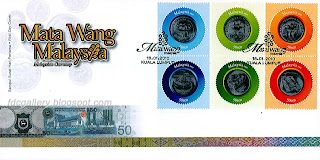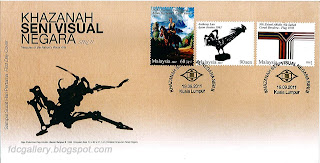Starting with the opening of the first 12.5 km track from Taiping to Port Weld (Kuala Sepetang), Perak on 1st June 1885, the railway service in Malaysia is reaching 125 years of age by 1 June 2010. It evolves from steam locomotive to electric-powered train, and from single track to electrified double track, KTM Berhad is determined to become the heartbeat of the nation which stays relevant and on track in moving 1 Malaysia.
T Class Steam Locomotive (32101)
The T Class steam locomotive was made by the W.G. Bagnall Limited, England in 1927. The first locomotive was acquired in 1929 and it last ran in 1964. The existing engine has been contributed to the Malaysia National Museum in May 1975.
21 Class Locomotives
Class 21 Diesel Hydraulic locomotive engine was manufactured by Kisha Seizo Kaisha Ltd, Japan. The first engine was attained in 1965 and the last engine, train no. 21102 was last used in 1994.
83 Class Electric Multiple Unit (EMU)
The train is among the first electric train introduced in Malaysia. Class 83 EMU is a South Korean made engine, manufactured by the Marubeni/Hyundai Corporation. The first EMU was acquired in 1997 and still operates until present under the KTM Komuter Services.
91 Class Electric Train Set (ETS)
This train is the latest and most modern electric train owned by KTM Berhad. Class 91 ETS is made by Hyundai-Rotem Corporation, South Korea. The train is able to run at its maximum speed of 160km/h, by far the fastest running train on the one meter gauge. The first unit was received in December 2009 and the final one arrived in April 2010. ETS is expected to run commercially by July 2010 for the Seremban – Kuala Lumpur – Ipoh route.

26 Class Locomotive (Blue Tiger)
The Class 26 High Powered locomotive is a German Made engine, manufactured by the General Electric – Bombardier. The first engine was purchased in 2003 and the series is still being used until present. This engine is one of the most resent and modern locomotive owned by KTM Berhad, and is used by the cargo services.
Temerloh – Class 56
Class 56 locomotive is the last steam engine used in Malaysia (1939 – 1946). Manufactured by the North British Locomotive Company Ltd, Glasgow, there were 39 locomotives in operations in Malaysia during the era. The engine named Temerloh with the number 564.36 is the last steam locomotive which ran in 1997 and the only surviving unit.
20 Class Locomotive
Class 20 Diesel locomotive was made by the English Electric, Vulcan Foundry, England. The first locomotive was obtained in 1957 and the service was launched on 31 July 1957. The engine was last used in 1992. A unit of the train is put on display at Shah Alam Museum, Selangor.
T Class Steam Locomotive (32101)
The T Class steam locomotive was made by the W.G. Bagnall Limited, England in 1927. The first locomotive was acquired in 1929 and it last ran in 1964. The existing engine has been contributed to the Malaysia National Museum in May 1975.
21 Class Locomotives
Class 21 Diesel Hydraulic locomotive engine was manufactured by Kisha Seizo Kaisha Ltd, Japan. The first engine was attained in 1965 and the last engine, train no. 21102 was last used in 1994.
83 Class Electric Multiple Unit (EMU)
The train is among the first electric train introduced in Malaysia. Class 83 EMU is a South Korean made engine, manufactured by the Marubeni/Hyundai Corporation. The first EMU was acquired in 1997 and still operates until present under the KTM Komuter Services.
91 Class Electric Train Set (ETS)
This train is the latest and most modern electric train owned by KTM Berhad. Class 91 ETS is made by Hyundai-Rotem Corporation, South Korea. The train is able to run at its maximum speed of 160km/h, by far the fastest running train on the one meter gauge. The first unit was received in December 2009 and the final one arrived in April 2010. ETS is expected to run commercially by July 2010 for the Seremban – Kuala Lumpur – Ipoh route.

26 Class Locomotive (Blue Tiger)
The Class 26 High Powered locomotive is a German Made engine, manufactured by the General Electric – Bombardier. The first engine was purchased in 2003 and the series is still being used until present. This engine is one of the most resent and modern locomotive owned by KTM Berhad, and is used by the cargo services.
Temerloh – Class 56
Class 56 locomotive is the last steam engine used in Malaysia (1939 – 1946). Manufactured by the North British Locomotive Company Ltd, Glasgow, there were 39 locomotives in operations in Malaysia during the era. The engine named Temerloh with the number 564.36 is the last steam locomotive which ran in 1997 and the only surviving unit.
20 Class Locomotive
Class 20 Diesel locomotive was made by the English Electric, Vulcan Foundry, England. The first locomotive was obtained in 1957 and the service was launched on 31 July 1957. The engine was last used in 1992. A unit of the train is put on display at Shah Alam Museum, Selangor.













